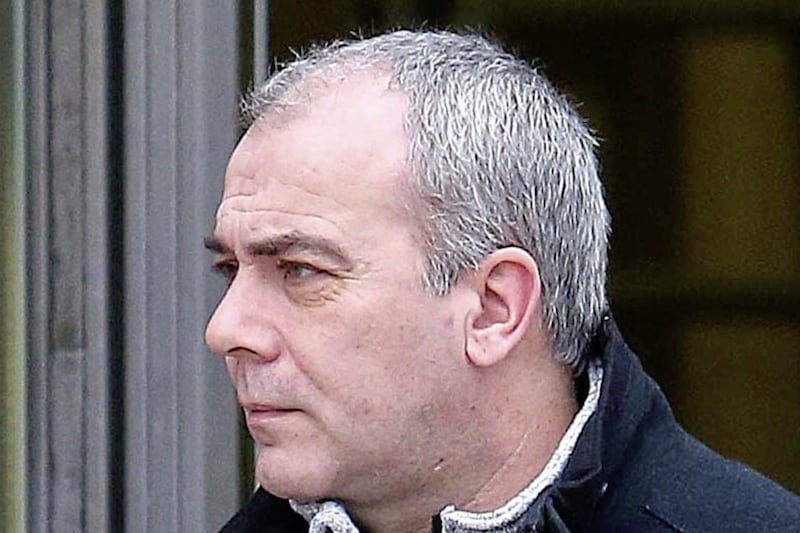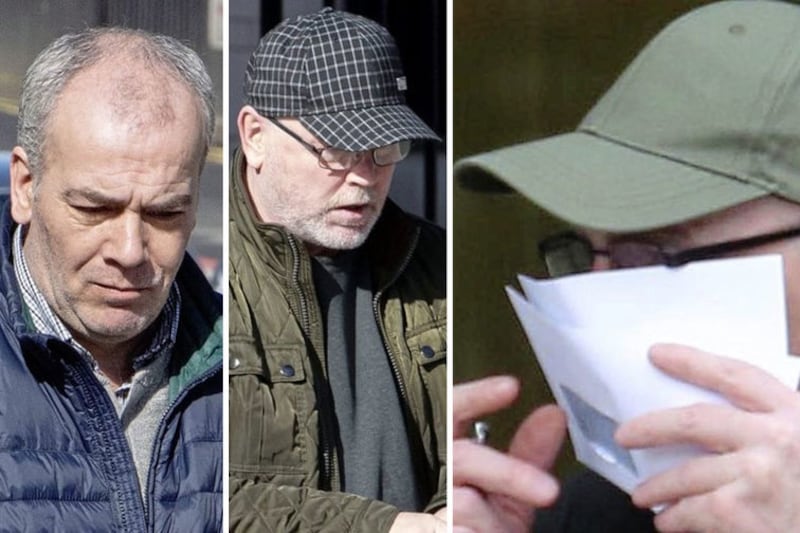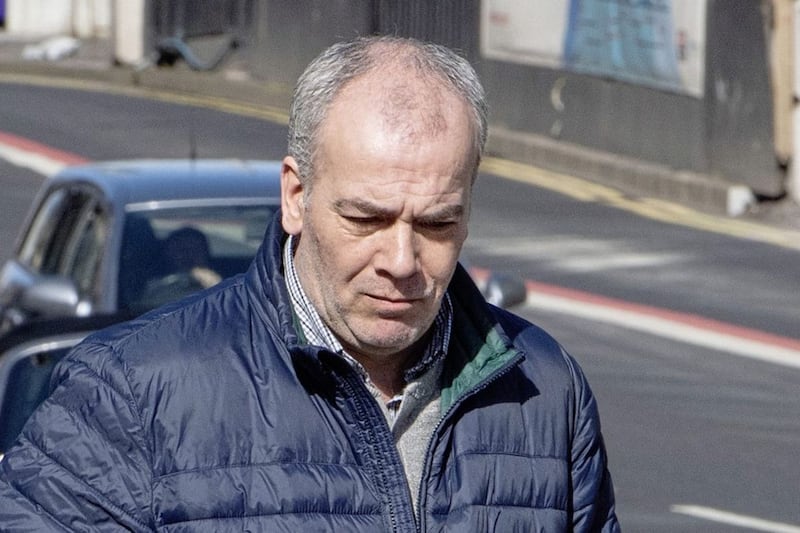A JUDGE heard yesterday how a police officer had been left traumatised by a dissident republican murder bid on a three vehicle PSNI convoy through north Belfast more than five years ago.
The officer's statement about the events on December 6, 2013, was read at the trial of three men at Belfast Crown Court yesterday.
Colin Duffy (51), Harry Fitzsimons (50) and 57-year-old Alex McCrory, whose addresses can't be given at this time, deny preparing and directing terrorism, and membership or professing to be members of the IRA.
Fitzsimons and McCrory are also charged with and deny attempting to murder police in the convoy, and possessing of the two AK47 assault rifles and ammunition used in the north Belfast gun attack.
Mr Justice O'Hara, sitting alone without a jury in the Diplock-style trial, heard an armoured police Landrover with three officers on board was leading two unmarked 'soft-skinned' vehicles to the nightly loyalist protest at Twaddell Avenue.
One of the two non-armoured vehicles it was escorting was towing a sign which had a message telling loyalist protesters not to play music at Twaddell AVenue and the other was carrying a loud speaker.
The officer, who was driving one of the soft skinned vehicles, said that as the convoy approached Holy Cross Church on the Crumlin Road he "heard rounds sounding'' and which were coming from his right hand side.
In his statement, read into the court record, the constable said he heard "two bursts'' of gunfire and swerved the vehicle to get quickly out of the area but his path was blocked by the police vehicles in front of him which were "slowing down''.
He said that events of that night had had a "traumatic effect'' on him, saying it had effected his concentration and that as a result "any thought I have are only half thoughts''.
The officer driving the armoured PSNI Landrover gave oral evidence yesterday at the trial of the events of the same night.
He told how he heard "five or six loud cracks" and looked to his right where he saw three men "hunker down" beside Holy Cross church and after the shots were fired they moved up in the direction of the roundabout at Twaddell Avenue, adding that he didn't believe they were involved in the incident.
The constable said that after the second burst of "louds crack'' he no longer thought it was fireworks and believed "it was something more serious and more sinister than that''.
Mr Justice O'Hara heard that there was a series of radio transmissions between the three police vehicles and when they reached Woodvale Road, the officer said they carried out an inspection of the vehicles.
He said his Landrover had been struck a number of times.
There was also a bullet hole in the sign being towed by one of the unmarked vehicles, including two burst tyres and bullet rounds to vehicle, along with bullet rounds to the bulk head, passenger seat and rear doors.
After confirming the bullet marks, the court heard that the incident was radioed into senior PSNI officers.
On the opening day of the trial earlier this week, the senior judge was told that in the aftermath of the shooting police recovered two AK47 assault rifles, one of which was found in a burnt-out silver VW Passet car used by the gunmen to fire on the convoy from behind a wall while standing on a tresled scaffold.
He was also told that the three defendants were covertly recorded and videoed under an operation codenamed 'Operation Idealistic" which was carried out the day after the gun attack by MI5.
The prosecution claim that Duffy, Fitzsimons and McCrory can by identified from the covert video footage and from an hour-long audio recording of them as they talked in a public park in Lurgan.
Counsel claimed that a transcript of the covert recording allegedly showed "an intimate knowledge" of the attack on the police convoy, the number of gunmen involved and the weapons with which they were armed and later recovered by police.








